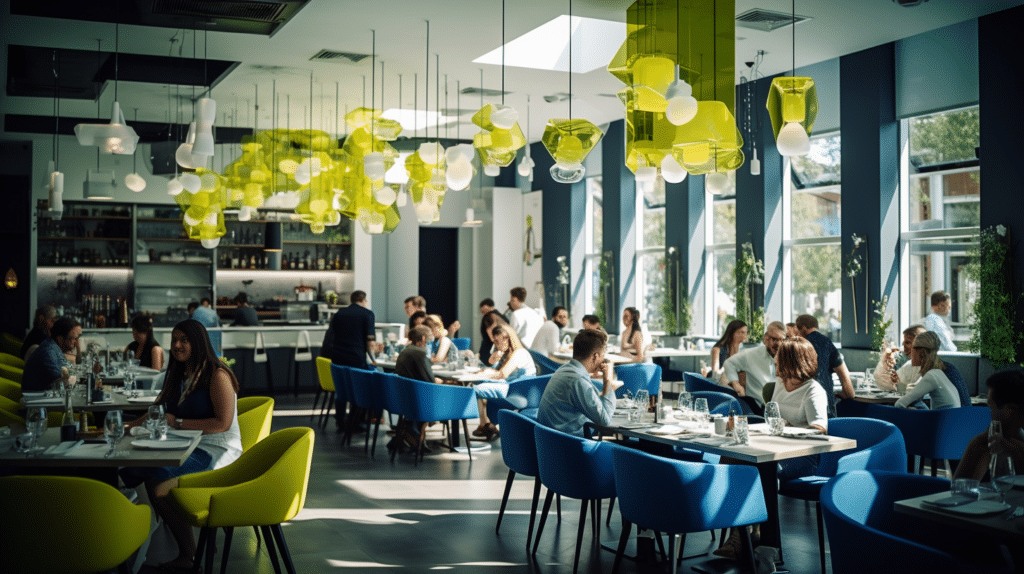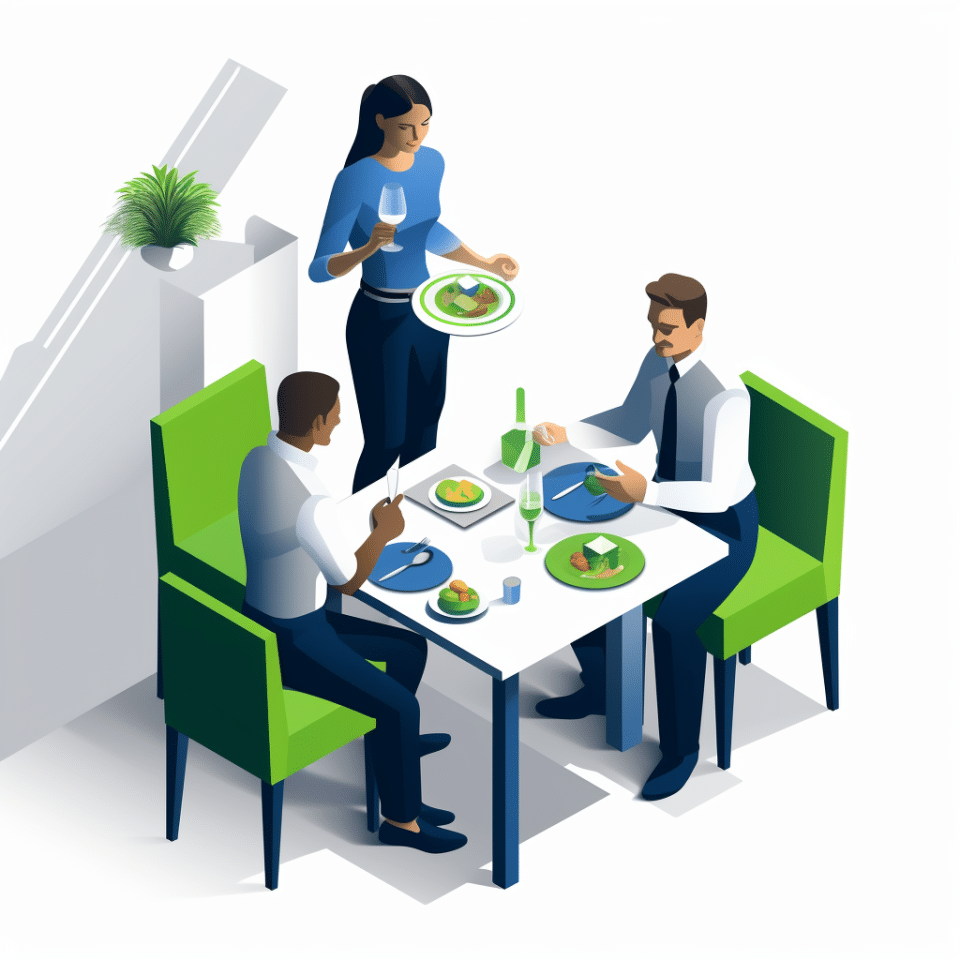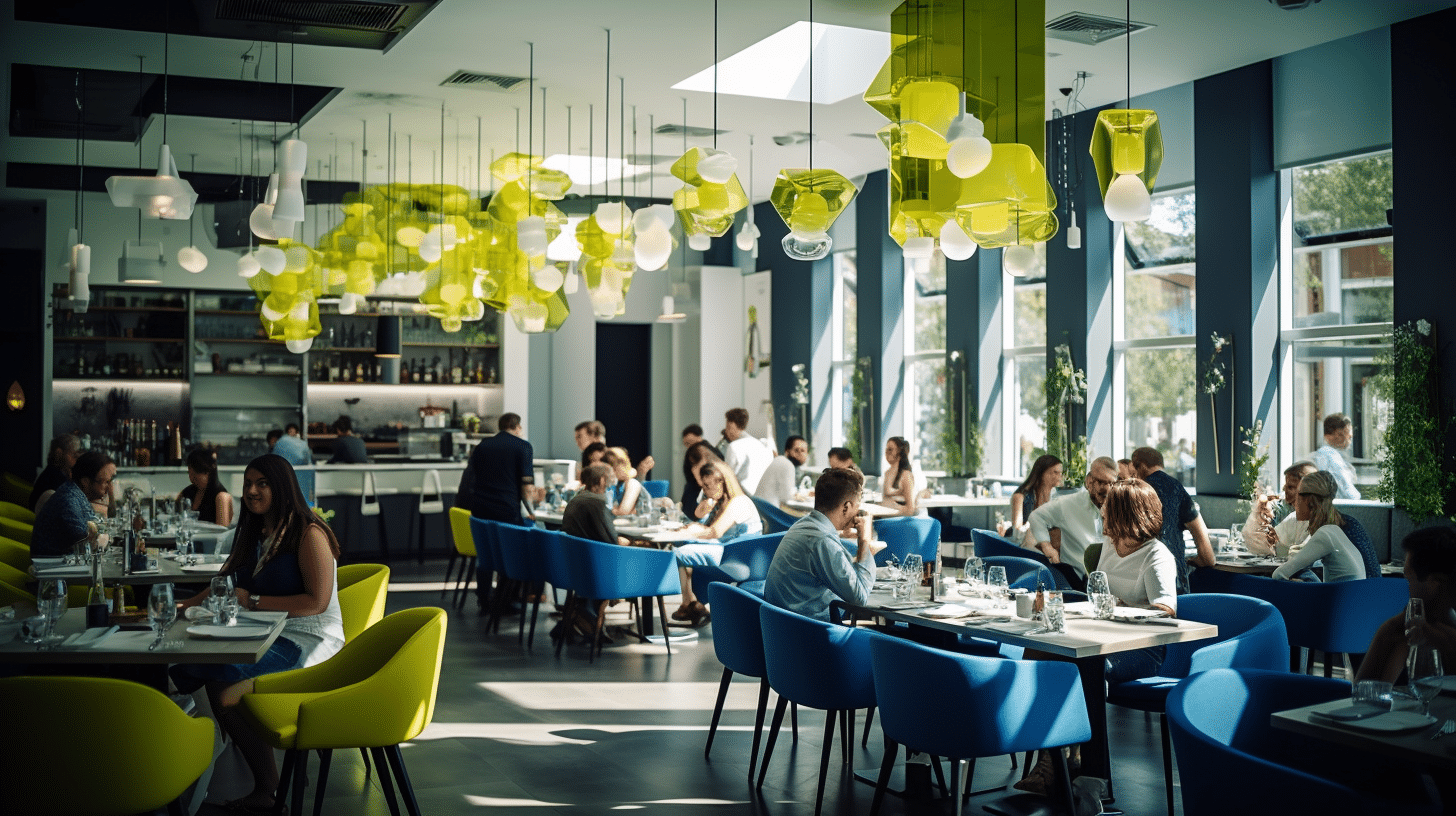
If you have a bustling restaurant, having faster table turnover is one of the best ways to increase both revenue and customer satisfaction. However, turning tables must be done tactfully. The last thing any restaurant should do is make the customer feel like they are being pushed out of their seat for the next guest. Instead, follow these hot tips to speed up the turnover time tastefully.
Table turnover rate may vary depending on the type of restaurant, but it is an important metric to track for any restaurant business. Table turnover time refers to the average amount of time it takes for a table to be occupied by different groups of guests. Each table can generate revenue for the restaurant multiple times throughout the day. Maximizing table turnover is crucial for restaurants to optimize their seating capacity and increase their profitability.
Hitting this table turnover sweet requires a balance between efficiency and guest satisfaction. Restaurant staff plays a significant role in achieving this balance by providing prompt service, efficiently managing table seating, and ensuring a seamless dining experience.
Calculating the table turnover rate involves dividing the total number of guests served by the number of tables available during a specific period. Turnover rate measures how often tables are occupied by new groups of guests. Calculate your table turnover rate regularly to track changes and identify areas for improvement.
There are numerous ways to improve your table turnover rate, such as implementing efficient reservation systems, optimizing menu design, and training staff to handle table management effectively. Moved freely throughout the restaurant to ensure prompt table clearing and seating new guests.
Turnover rate may be higher in fast-casual or quick-service restaurants compared to fine-dining establishments. Measures how efficiently a restaurant utilizes its seating capacity to generate revenue. Metric used in the restaurant industry to assess operational performance.
Used in the restaurant industry as a key metric to improve operational efficiency and table turnover. Restaurant POS systems can be utilized to track and analyze table turnover data.
Time in your restaurant is valuable, and maximizing table turnover ensures that more guests can experience your culinary offerings. Running a restaurant effectively requires a focus on both guest satisfaction and operational efficiency. Visit the restaurant during peak hours to observe table turnover patterns and identify potential bottlenecks.
A low table turnover rate can lead to long wait times for guests and hinder the restaurant’s ability to maximize revenue. Restaurant seat turnover rate is another term used to describe the frequency at which tables are occupied by new guests.
Balance between table turnover and guest satisfaction is crucial for long-term success. Table turnover rate means that each table can generate revenue multiple times throughout the day.
Table in advance to avoid long wait times and ensure a table is available upon arrival. Wait for a table can lead to customer dissatisfaction and negative reviews.
Restaurant can improve its table turnover rate by implementing various strategies, such as streamlining the ordering process, expediting meal preparation, and ensuring prompt table clearing.
Table turnover measures the frequency at which tables are occupied by new groups of guests.

How To Calculate Table Turnover Rate
To figure out the table turnover rate, start by identifying the overall amount of tables within a dining establishment. Then, monitor the quantity of parties or groups that occupy those tables within a specific timeframe, like a day or a month. Compute the total number of parties served during that period and divide it by the total number of tables to determine the average number of parties per table. Lastly, divide the total number of parties served by the total number of hours the restaurant was open to calculate the average number of parties served per hour. This will provide you with the table turnover rate, demonstrating how swiftly tables are being cleared and how effectively the restaurant is catering to its patrons.
Why Improving Table Turnover Rate is Crucial
Improving table turnover rate is crucial for the overall success and profitability of a restaurant. The table turnover rate refers to the amount of time it takes for a restaurant to serve a customer, clear the table, and then seat another party. The faster a restaurant can turn over tables, the more customers it can serve and the more revenue it can generate. By maximizing the number of guests served in a given time period, a restaurant can increase its overall sales and profits. Additionally, a high table turnover rate can also lead to increased customer satisfaction, as guests are able to be seated and served more quickly. This can lead to positive word-of-mouth and repeat business, ultimately contributing to the long-term success of a restaurant. As a result, improving table turnover rate is crucial for the financial health and overall success in the restaurant industry.

Seat Incomplete Parties to Improve Your Table Turnover Rate
Seating incomplete parties can actually improve your table turnover rate by allowing you to fill tables faster. Seat turnover rate directly impacts average table wait times. When a table opens up, rather than waiting for a complete party to fill it, you can opt to seat a smaller group or even individuals. By doing so, you are able to keep your tables occupied and turn them over more quickly. This also helps to minimize the downtime between parties, ultimately increasing your turnover rate and allowing you to serve more guests in a given time period. Additionally, seating incomplete parties can also help to create a buzz and lively atmosphere in your restaurant, as the space appears busy and vibrant, which can attract more customers and ultimately increase your overall revenue.
How to Calculate Your Restaurant Average Meal Duration for Faster Table Turns
One way to improve the efficiency of your restaurant is by accurately calculating the average meal duration for your guests. This data can help you better manage table turnover and thus improve the overall dining experience for your customers. To calculate the average meal duration, monitor the amount of time guests spend at their tables from the moment they are seated to the time they leave. Keep track of this data over a period of time and then calculate the average time spent by summing up the duration of all guests and dividing by the total number of guests. Once you have this information, you can use it to make informed decisions about seating arrangements, reservations, and staff scheduling to help speed up table turnover without sacrificing the quality of service. By understanding and managing your average meal duration, you can create a more efficient and pleasant dining experience for your patrons.
Top 7 Ways to Improve Turnover on Every Table in Your Restaurant
1. Train Servers to Greet Their Tables Immediately for Faster Turnover Times
Make sure every guest is greeted as soon as they come into the restaurant. You can even add more flair by opening the door and welcoming them as guests. Seat your guests as quickly as possible. Customers hate standing at the door when there are lots of open tables in sight.
This turnover tactic should be like clockwork for your servers. Industry standards recommend that the server should get to a patron’s table within one minute of being seated. When the server initially comes to the table, drinks should be ordered. Within ten minutes of ordering the drinks, food should be ordered. This way, the restaurant is saving valuable minutes in which customers are just waiting for their server.
Of course, this tactic is not an exact science. Many times, especially in finer dining establishments, customers enjoy chatting with one another prior to ordering. However, incentivizing your employees to make sure they are getting to the tables immediately will lead to a faster and more satisfying customer service experience.
2. Don’t Explain Menu to Repeat Guests to Increase Restaurant Table Turnover
A description of the restaurant concept and menu layout is great for first-time guests. It gives servers a way to showcase the best menu items and work on upselling in the process. However, if a customer has been to a restaurant before, retelling the entire restaurant spiel is inefficient, and sometimes, even annoying to customers. Instead, train your wait staff to save those precious minutes by asking customers if they have visited before.
Servers should ask customers whether they’re new to the establishment or have been there before, says Boyd Hoback, CEO of Bad Daddy’s Burger Bar. A return visitor likely won’t need a repeat of the menu, saving you time.
“If they’ve been to us before and are familiar with the menu, we immediately ask if they want to go ahead and order,” Hoback says. If there’s a large party at a table, Hoback recommends putting at least one or two more servers on that table to speed up the service process.
3. Increase Table Turnover in Your Restaurant by Assigning Two or More Servers to Large Tables
Table management can help improve table turnover rate in almost any type of restaurant. Parties of eight or more can be overwhelming for one server to handle. A server that feels stretched thin in these situations means slower ordering times and poorer customer service. Reduce wait times by putting more than one server on large tables. This enables servers to be attentive to the customer’s needs, and that means a quicker dining process. Be sure also to train your staff to clear finished dishes throughout the meal as opposed to waiting until all guests have left the table. This will allow a quicker clean-up and turnover of the table and waiting guests can be seated sooner
4. Speed Up Your Restaurant Table Turnover Rate by Dropping Off the Check Prior to the End of the Meal
Within two bites or within two minutes, your server should check back on the dessert with the check already tallied. If the guests are happy with the dessert or didn’t order dessert, then your server can put the check down. If you have server check pads, place them upright. This serves two purposes; it is easy for the guest to see the check, and it is also easy for the server to know if the guest has payment ready when the check pad is no longer upright. When serving the check, it’s important for servers to go along with carrying out boxes, if requested, or if there is a lot of food leftover.
Training your servers to drop a check off prior to the end of the meal is a sure way to improve your average table turnover rate. During busy weekday lunches, many customers appreciate the urgency of their server dropping a check off early. Just be sure that you ask customers whether or not they’d like to order anything else, so you don’t risk losing revenue or leave your customers feeling like they are being rushed out of their seats.
5. Test Out New Technology
Although paying the check signals the end of a meal, it’s oftentimes a lengthy task. Servers have to collect credit cards, run them back to the register, print out receipts, and deliver them back to the table. This doesn’t even include the time-consuming tasks of splitting the check at the last minute or using gift cards. Even after you’ve delivered the receipts to the tables, customers still tend to take their time writing out their tips and chitchatting. To help expedite this process, consider investing in a mobile POS system.
In the technologically advanced times in which we live, gone are the days where employees must go to a stationary POS system to take orders and finalize payments. Instead, restaurants have the option of having mobile pay stations and tableside tablets for easy ordering. By using upgraded technology devices, servers can run credit cards and complete checks right at the table in front of their customers or let customers pay when they’re ready to leave. If you own a casual restaurant, opting for these electronic systems can help drastically increase efficiency by allowing servers to focus on other tasks. Popular casual establishments like Applebee’s and Chili’s have already begun using this technology.
6. Don’t Accept Reservations on Busiest Nights
If your restaurant is consistently busy during Friday night dinner, giving diners the options to make reservations can cost your restaurant big in turnover rates and revenue. With a reservation system, tables are held for customers that may not show up on time at all. Instead of risking this cost to both time and revenue, keep your restaurant strictly “walk-in” during your busiest days.
7. Use Seating Software
If your hostess manually assigns tables, you probably aren’t seating guests with maximum efficiency. Although on slower nights, this may not seem like a huge issue, if your restaurant is busy, seating a small party at a large table can slow down the entire night. Instead, try seating software that aids in creating seating assignments based on your reservations and waitlist.
Seating software help to save your time and labor resources by reducing your manual work. The software consists of many modules to implement various works. One of the modules will make schedules and allocate staff to a specified task, ensuring that you do not need to fix too many staff for a simple assignment. The software will calculate the number of resources needed for special events and programs and provide better results to carry out the operations in an efficient manner. This will help in saving time and improve seating efficiency. In addition to increasing efficiency, many of these software programs will send mobile updates to customers, letting them know when their table is ready.
By making simple changes to the routines of your servers, hosts, and service in general, or by updating your dining room layout or menu, you’ll be able to get customers in out and the door in a timely fashion without making them feel rushed or unwanted.
Your table turnover rate is an important way to increase the number of customers in your restaurant, reduce wait times for customers, and improve the customer experience.
The average restaurant table turnover rate, also known as table turnover or table turns, is a crucial metric for restaurants as it measures how efficiently they utilize their seating capacity. The table turnover sweet spot, the ideal number of times a table is turned over during a meal service, varies depending on the restaurant’s concept and dining style. However, maintaining a healthy turnover plays an essential role in improvingyour restaurant’s table turnover, which directly impacts overall revenue and profitability throughout the restaurant.
A restaurant’s table turnover rate measures the frequency at which tables are occupied by different groups of guests within a specific timeframe. A higher table turnover rate indicates that the restaurant can accommodate more guests and generate more revenue throughout the day. Improving table turnaround time means being able to seat more guests leads to increased sales opportunities, and a higher table turnover rate contributes to a more efficient and profitable dining experience.
Numerous strategies can be implemented to improve your table turnover rate without compromising. It’s essential to learn how to improve specific elements including restaurant design. Streamlining the ordering process, decreasing wait times for customers, making it easy to reserve a table, expediting meal preparation, and ensuring prompt table clearing after guests depart can significantly reduce the time spent per table turn. Additionally, implementing efficient seating procedures and training staff to handle table management effectively can enhance the overall table turn times.
By prioritizing faster table turnover rates alongside other profitability metrics, such as average guest check, restaurants can optimize their operations, increase revenue, and achieve sustainable growth.



